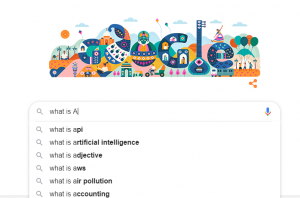At a recent communications conference in Gurgaon, I was impressed by one of the presentations on Artificial Intelligence and its disruptive ability to take away jobs (worst case scenarios) or act as a force multiplier. However, if one looks around AI is already in our lives and possibly in our pockets. I would say that we are using AI much before it became a fashionable terminology.
Perhaps am a bit of a geek, but below are some of interesting intelligence we are using and have made them a habit.
Alerts: We all are subscribed to Google Alerts. In fact, it has been so prolific, most of these alerts are now filling our ‘free’ gmail accounts. We track and monitor corporate information through these alerts. And it is addictive as well. Google’s search bots are extremely efficient as well. Do you want to make your alerts smarter? You can index them, monitor topics and much more. Here is the link on eight ways to make Alerts work better for you.
 Writing/ Spell checks: We do have the basic version of spell checks on our MS Word. However, it has always been very basic. If you really want an enhanced an intuitive version, Grammarly is doing a superlative job at making sure whatever we type or write is error free. And it is so incredibly effective that it will help you type better text messages as well.
Writing/ Spell checks: We do have the basic version of spell checks on our MS Word. However, it has always been very basic. If you really want an enhanced an intuitive version, Grammarly is doing a superlative job at making sure whatever we type or write is error free. And it is so incredibly effective that it will help you type better text messages as well.
 Autocomplete: Google has been dabbling on autocomplete for over a decade. It was meant to improve the way users are searching for stuff online. In 2018, this feature was added into your emails as a ‘smart compose’ function. It is like what Grammarly has to offer only that it is basically works well on gmail. This is predictive writing at its best however, it learns from your writing style based on what google is reading from your mails and your patterns.
Autocomplete: Google has been dabbling on autocomplete for over a decade. It was meant to improve the way users are searching for stuff online. In 2018, this feature was added into your emails as a ‘smart compose’ function. It is like what Grammarly has to offer only that it is basically works well on gmail. This is predictive writing at its best however, it learns from your writing style based on what google is reading from your mails and your patterns.
Voice Enabled apps: There are a plethora of applications which are enhancing our ability to improve productivity. Speech enabled apps also rapidly write texts for you. In fact, parts of this article are written using voice. Thankfully, all the applications such as Siri, Alexa, OK google have now started understanding the Indian accents better.
This is also now available in cars- “hello MG” and “hey Mercedes” are slowly doing away with knobs and buttons in our vehicles. Similarly, on the banking side, bots are helping answer mundane queries as well.
Stock markets are also working on some predictive technology to help investors invest right.
Is AI to be feared then? My experience working with Industrial businesses has taught me it is not! Just like people fear robots taking over. It is a productivity tool and takes away menial aspects from our lives. Typewriters gave way to computers and now mobile handsets. Perhaps the next generation laptop will be a complete touch interface? Or will we become hybrids with an ‘Intel inside’ kind of a chip?
Communications however is a function which is having applications which are on the creative side. Measurement of communications has also not become an exact science, despite the desire to measure communications efforts. AI is learning fast; however, nothing beats the human brain – yet.
The views and opinions published here belong to the author and do not necessarily reflect the views and opinions of the publisher.



Nowadays AI is really very important sphere. We can use it in different fields, in communications too. Why use machine learning and AI?For a wide array of tasks, machine learning is superior to traditional software designs. It stands behind state-of-the-art search engines, real-time data science, digital security, and artificial intelligence software.
Everyone talks about machine learning, but the fact remains that few people can answer the question What is machine learning? People tend to call everything artificial intelligence, whether it’s a phone using deep learning for face recognition or a travel app using machine learning algorithms to define the best time for buying airline tickets. In reality, these are different things.
Thank you for highlighting the creative possibilities of AI in communications. Great read!